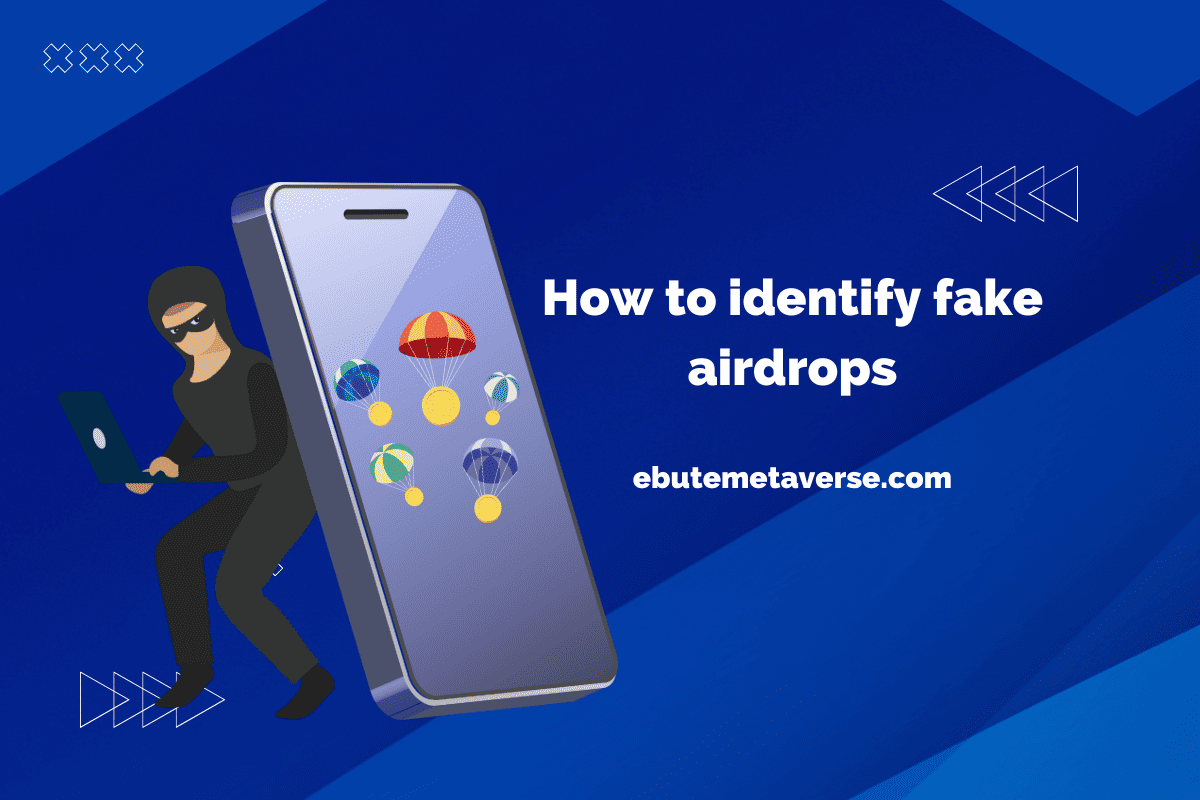How to Identify Fake Airdrops + 8 Steps to DYOR
Crypto airdrops have exploded in popularity as a way for new projects to distribute tokens and gain attention. However, the hype around free crypto drops has given rise to fake airdrops designed to steal users’ information and funds.
It’s essential to learn how to identify fake airdrops so you don’t fall victim to scams. This article provides tips on how to spot fake crypto airdrops and signs that an airdrop is likely legitimate.
For background on what crypto airdrops are, see our guide on how crypto airdrops work. Now let’s dive into how to tell real airdrops from fake ones.
How Fake Crypto Airdrops Try to Steal from You
Legitimate airdrops can be highly beneficial for early adopters who get free tokens that may gain significant value as the project grows. However, many fake crypto airdrops have also emerged trying to take advantage of hype around this distribution model.
Here are some of the ways fake airdrops operate:
- Asking for private keys or seed phrases to “register” for the drop. This gives scammers full access to your crypto.
- Making users connect wallets via fraudulent Dapps that drain funds.
- Spreading malware disguised as a wallet to install on your device.
- Collecting KYC information like IDs and then using the data to commit identity theft.
- Acquiring wallet addresses to target users for other scams later.
- Spreading fake links that trick users into inputting their seed phrase.
By learning common tactics used by fake airdrops, you can avoid falling victim to these scams.
How to Identify Fake Airdrops
Learning how to identify fake drops is essential to protect your assets and information. Here are detailed tips to spot and avoid fake airdrops:
Research the Project Extensively
The #1 rule is to thoroughly research any airdrop before taking part. Search for information on the project’s website, whitepaper, founders, and blockchain activity. Cross-reference data from multiple sources to fact check claims. If an airdrop seems fishy, simply avoid participating, especially if asked for sensitive information upfront.
Look for Red Flags in Messaging
Scam airdrops typically have urgent, pushy messaging trying to get users to act fast without thinking. Be wary of language like “last chance to register!” or “limited spots remaining!”. Legit projects allow ample time to claim airdrops without pressuring users. Also watch for poor grammar and spelling errors which signal scammers’ attempts.
Verify Social Media Activity
Check the project’s social media channels like Twitter. Fake airdrops often have low followers, few posts, and little engagement. Verified active communities signal an established crypto project more likely running a valid airdrop. Be wary if accounts were just recently created as well.
Use Reliable Sources to Verify
News sites like CoinTelegraph and CoinDesk often report on upcoming airdrops from major projects. Search reliable crypto news sources to see if the airdrop you received matches reports from trusted outlets. Broad media coverage indicates a real airdrop, not something faked.
Check Required Procedures
Most airdrops simply require adding a token address to your wallet to receive free tokens. If the airdrop requires unusual steps like installing an app or inputting private keys, steer clear. And never enter your seed phrase or connect your wallet via DApps to suspicious sites.
Look Into Token Contract Addresses
Search the token contract address provided for the airdrop via Etherscan or BscScan based on network. If the contract address shows no activity, it’s likely a fake. Active contract addresses with lots of transfers signal a legitimate crypto project.
See If Others Have Reported Scams
Search online to see if the airdrop has been reported as a scam by other users. You can also check trusted crypto scam reporting sites like BitcoinAbuse to verify if the project appears legitimate. If many others are warning about the same airdrop, it’s best to avoid it.
Further Reading: How to Spot a Crypto Airdrop Scam and Stay Safe
Signs a Crypto Airdrop Is Likely Legitimate
For contrast, here are signs an airdrop is more likely to be legitimate and safe to participate in:

- The project has been operating and communicating for months leading up to the airdrop. Quick airdrops out of nowhere tend to be more suspicious.
- There is positive chatter about the airdrop across social channels and crypto news media.
- The project’s team is public and has a track record building reputable crypto products previously. Anonymous teams raise red flags.
- The required steps to claim the drop are simple, like adding a token address or opting in via the project’s platform.
- The airdrop has a clearly outlined timeline and set distribution date. Scams try to create false urgency.
- Token distribution is spread over time, not a sudden massive dump which inflates supply.
- Official announcements come through the project’s channels, not random DMs or emails.
Further Reading: How to Participate in Crypto Airdrops in 8 Steps
Identifying Legit Crypto Airdrops in 8 Steps
Here is a detailed step-by-step guide to identifying legit crypto airdrops:
Step 1: Carefully Analyze the Initial Airdrop Notification
- Scrutinize the message source – is it coming from an official channel like the project’s website or social media? Or a random DM, email, etc.?
- Watch for urgency cues and high-pressure tactics pushing you to act fast. Scams try to prevent rational thinking.
- Check grammar and language. Misspellings and broken English signal potential scammers.
Step 2: Vet the Project Behind the Airdrop Thoroughly
- Google the project name + “scam” or “fake” to see if warnings appear.
- Search the project website for any inconsistent claims or details.
- Read the whitepaper fully to assess professionalism.
- Research founders/team members for credibility and online presence.
Step 3: Verify Social Platform Activity
- Review follower counts on Twitter, Telegram, etc. Low engagement is a red flag.
- Check account creation dates. Recently made accounts are suspicious.
- See if team members are actively communicating on official channels.
Step 4: Check News Media Coverage
- Search if reputable crypto news sites have reported on the airdrop.
- Scams are rarely covered by trusted outlets like CoinDesk, Decrypt, etc.
- Lack of reports from credible sources is a warning sign.
Step 5: Inspect Token Contract Addresses
- Lookup contract addresses from the airdrop via blockchain explorers.
- No activity or transactions suggests a fake airdrop.
- Numerous transfers indicates more legitimate project activity.
Step 6: Monitor Online Crypto Communities
- Search Reddit, Quora, forums to see if the airdrop is flagged as scam.
- Utilize scam reporting sites like BitcoinAbuse to cross-reference.
Step 7: Analyze Steps to Participate
- Review all required steps to claim the airdrop.
- Anything demanding private keys, downloads or personal info is extremely suspicious.
- Legit airdrops have simple participation steps.
Step 8: Trust Your Instincts
- If multiple aspects feel questionable, err on the side of caution.
- It’s better to miss a real airdrop than get scammed.
You can identify and avoid most fake airdrops with diligent analysis of these key aspects. Always thoroughly investigate before supplying any sensitive information or tokens.
Further Reading: Best Hardware Wallet to Keep your Assets Safe: Top Picks for 2023
Final Thoughts

While no airdrop is 100% risk-free, following security best practices minimize your chances of issues. The key is understanding that fake airdrops aim to lower users’ guard and exploit vulnerable points of trust.
By learning the common tricks on how to identify fake airdrops, you can keep your information and crypto assets more secure. Analyze airdrops carefully rather than blindly following along or getting swayed by messaging.




